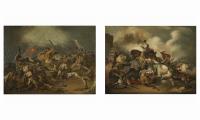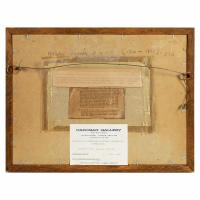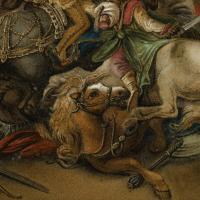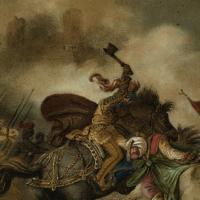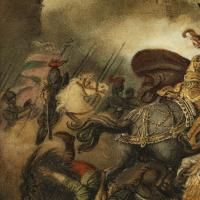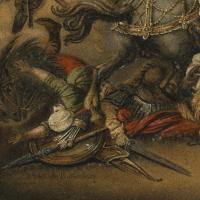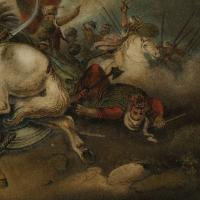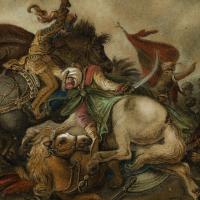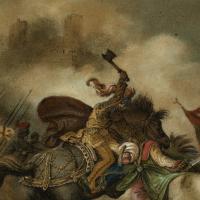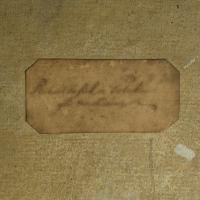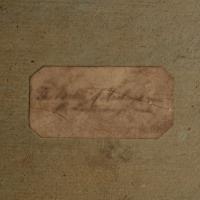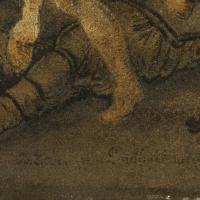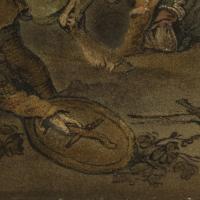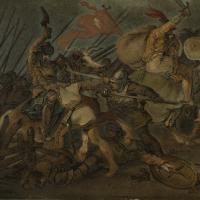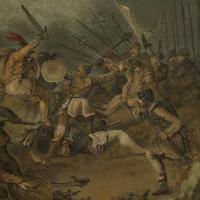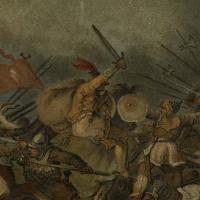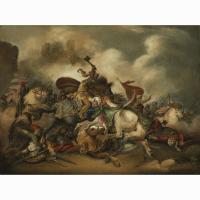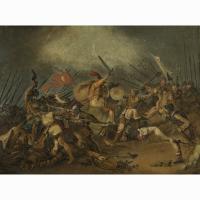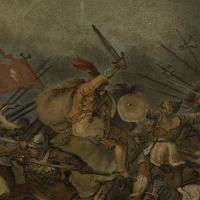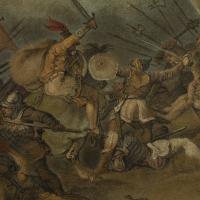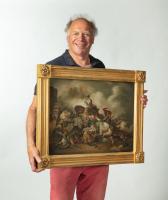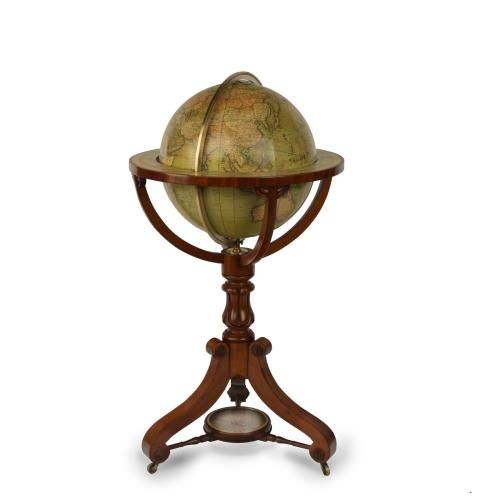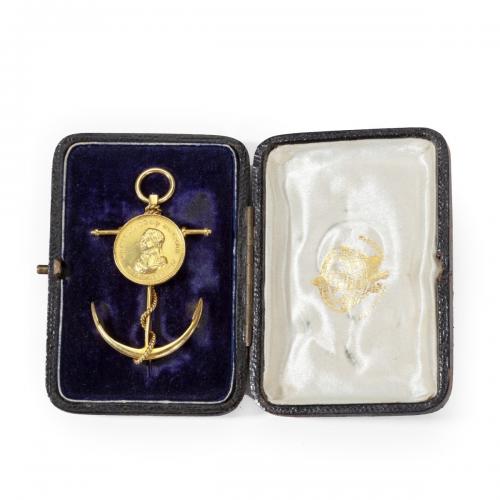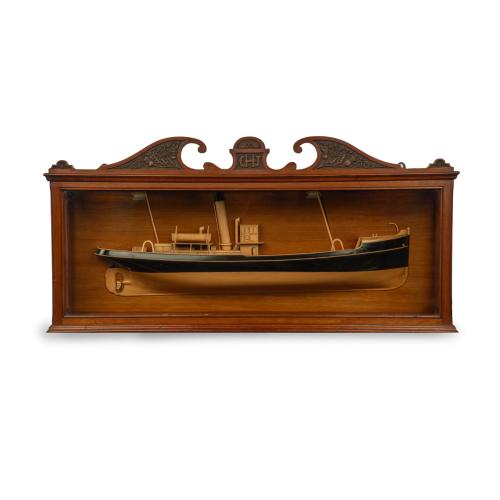
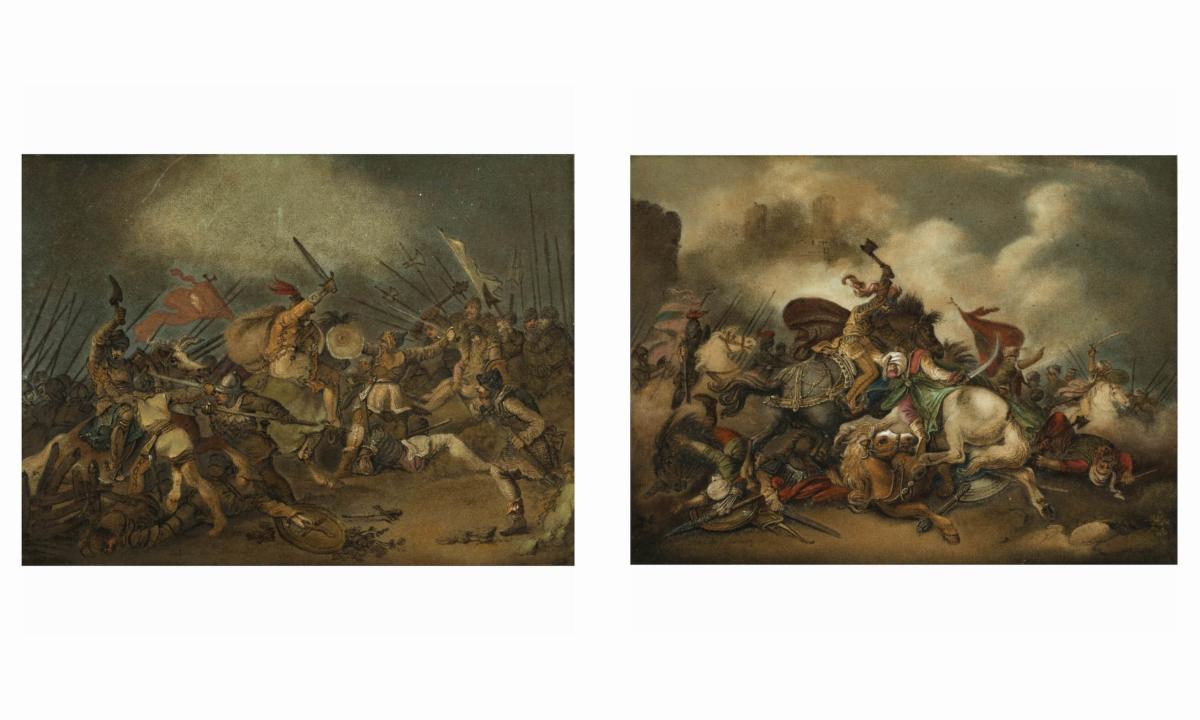
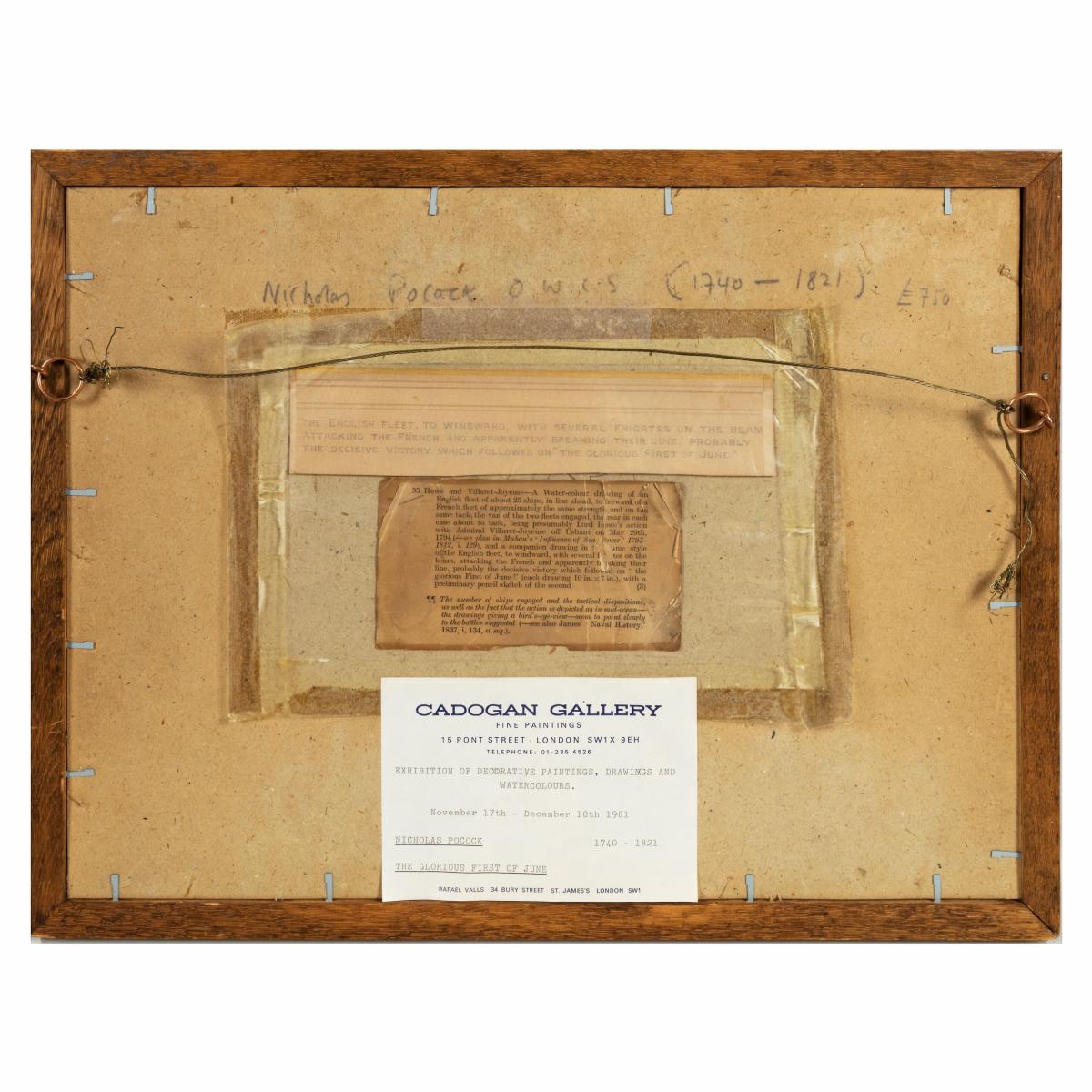
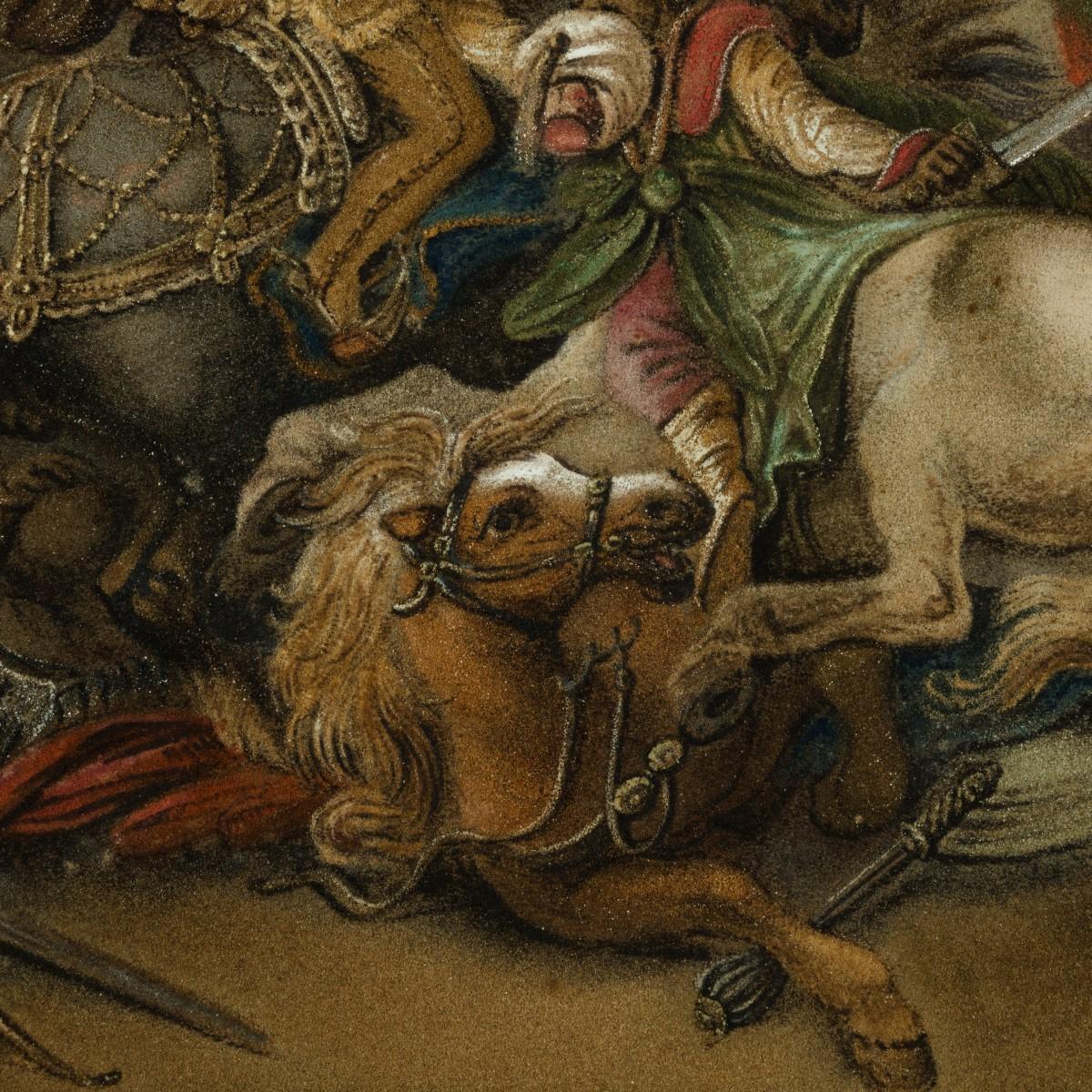
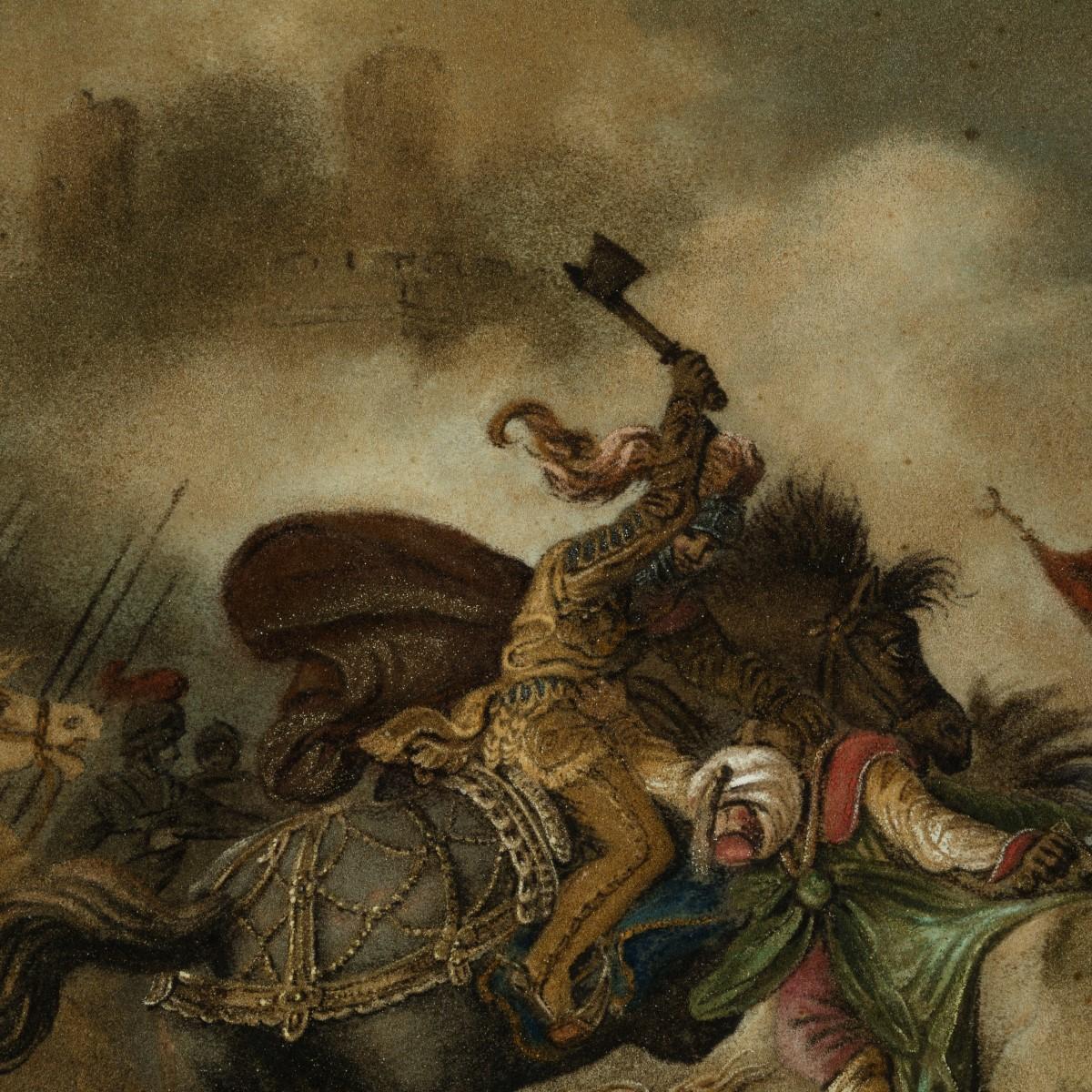
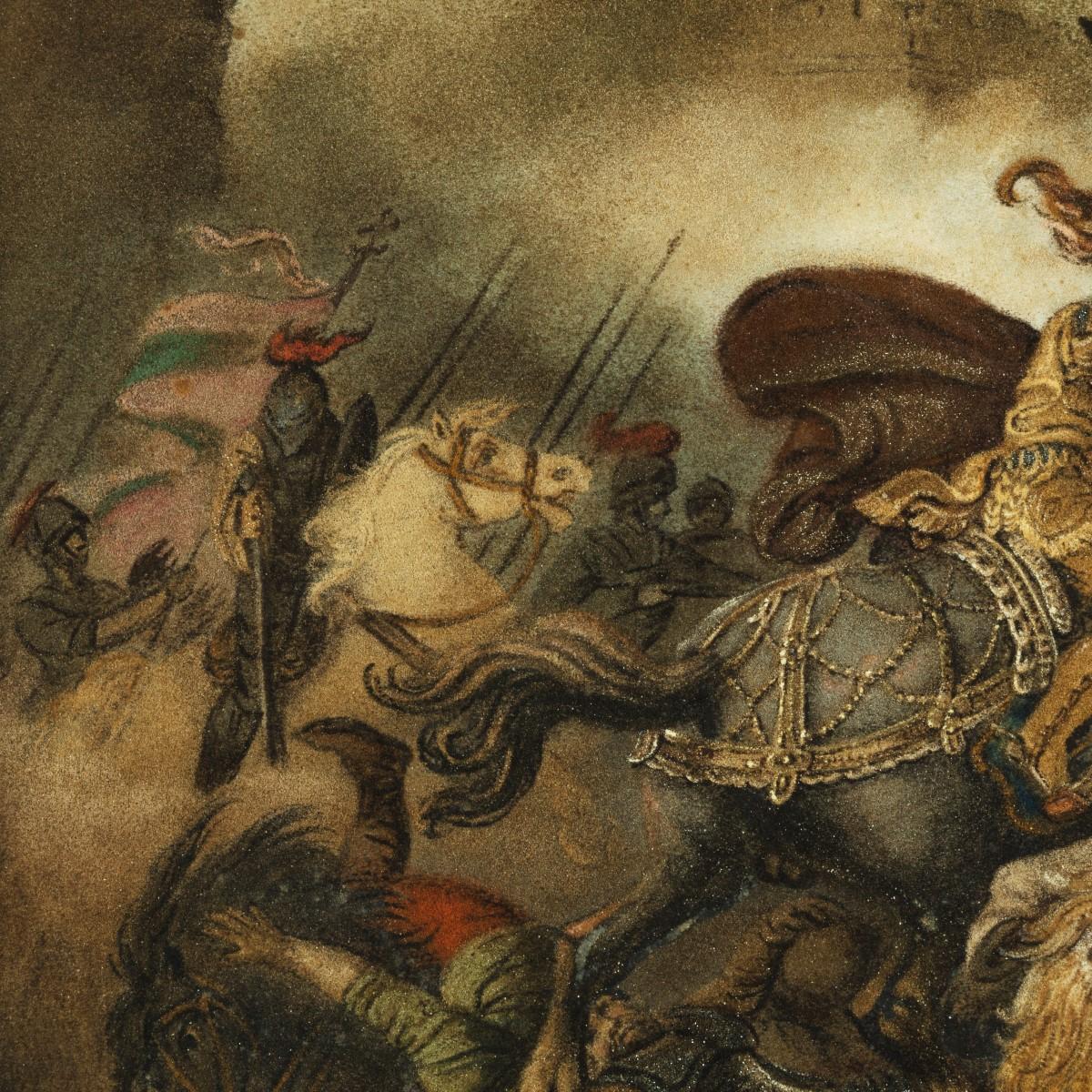
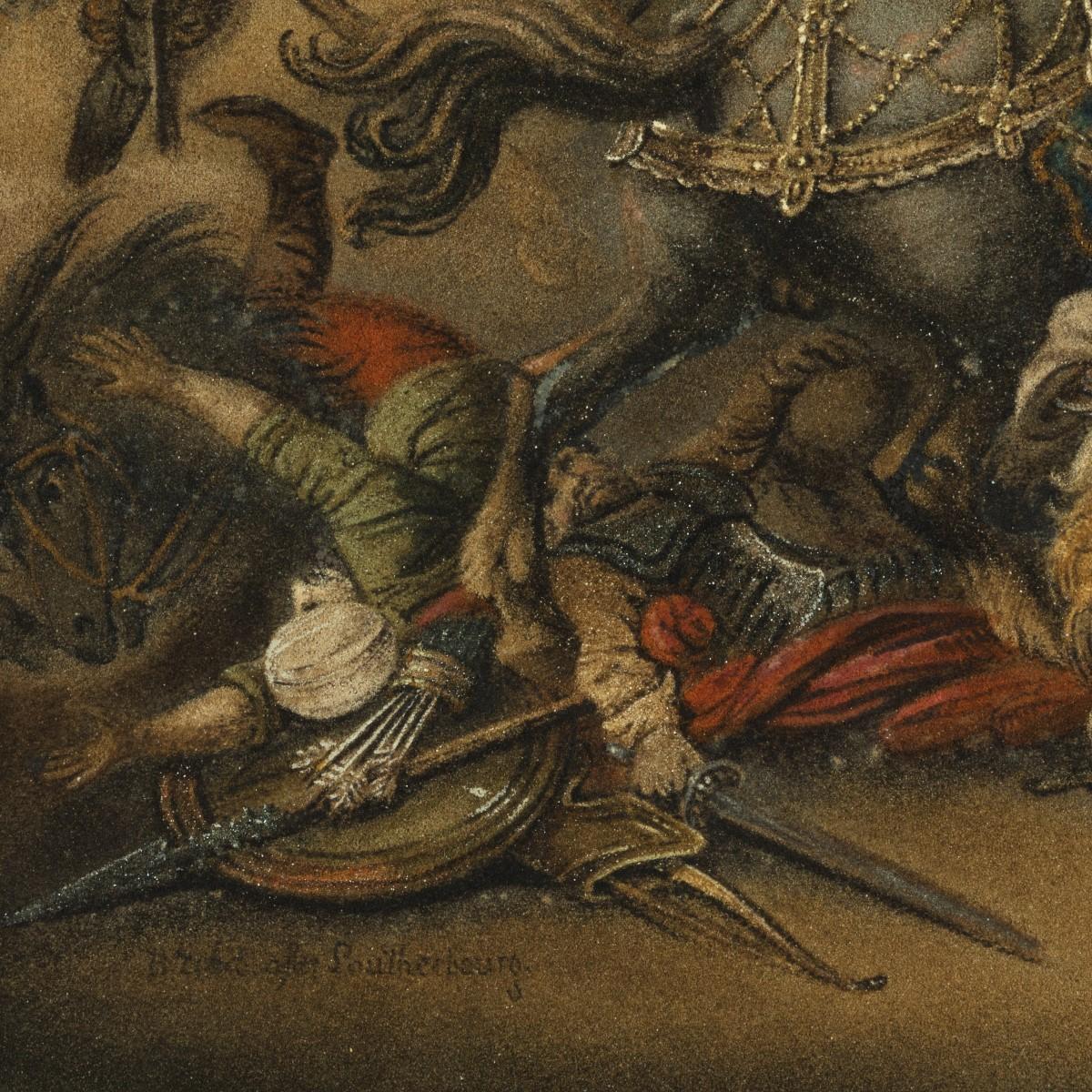
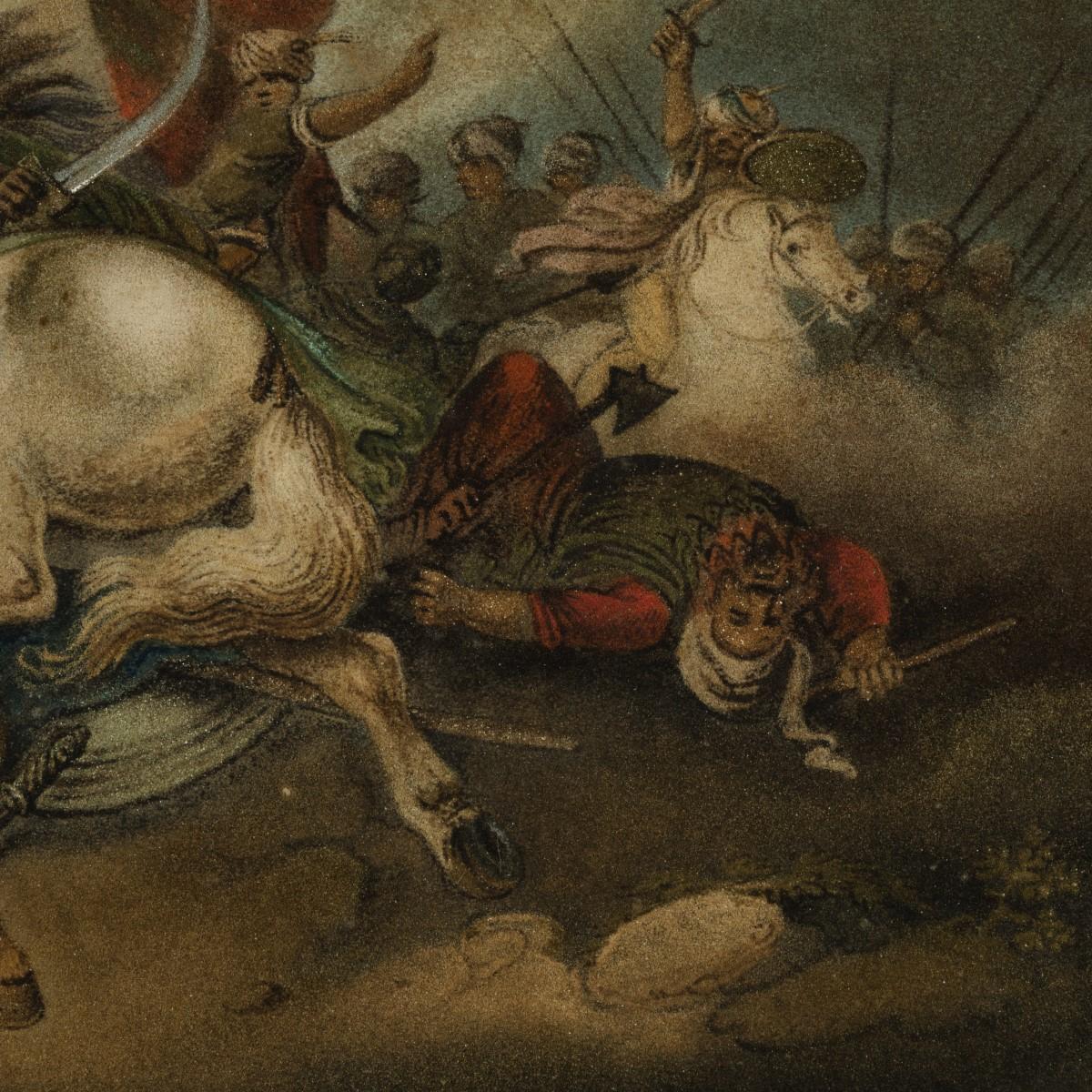
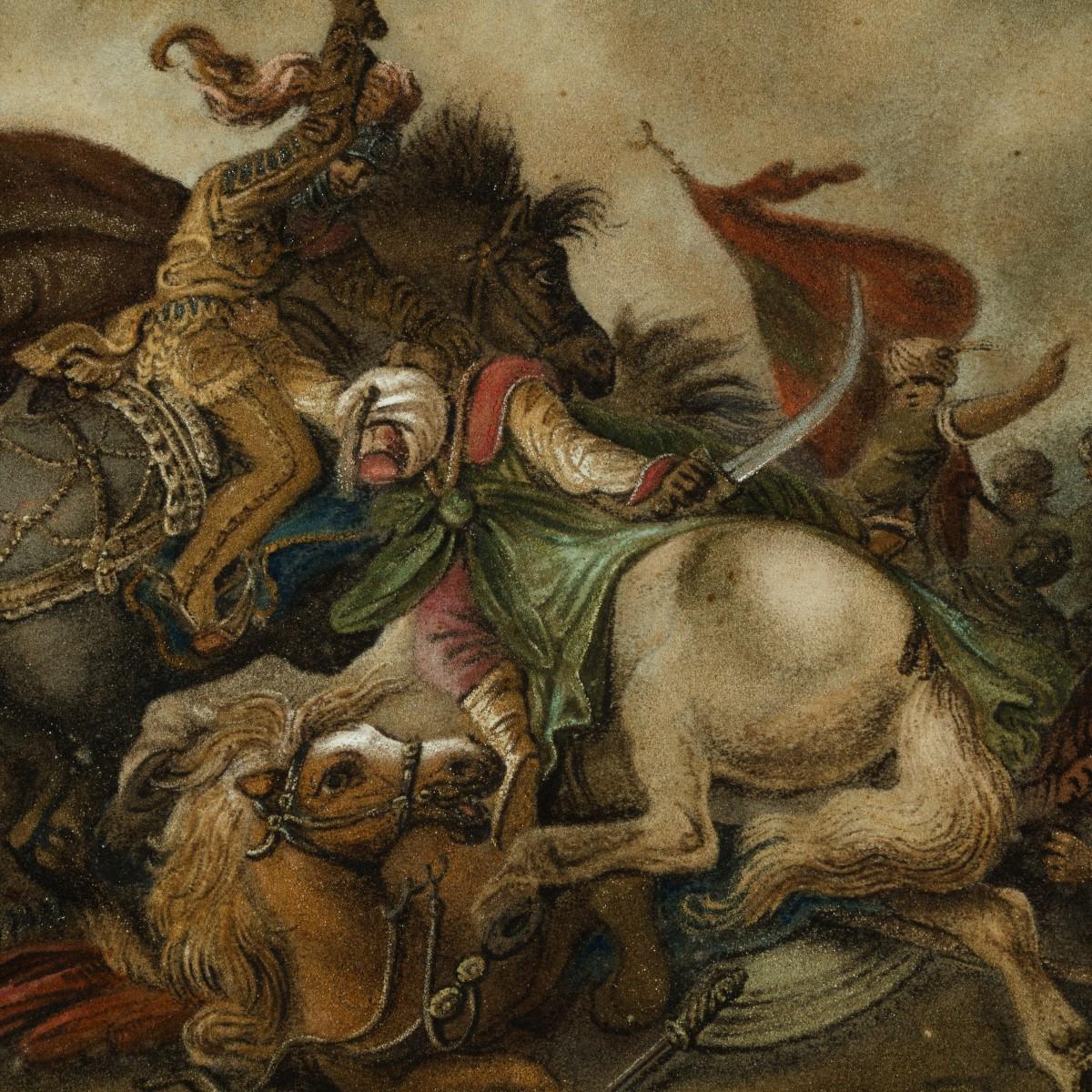
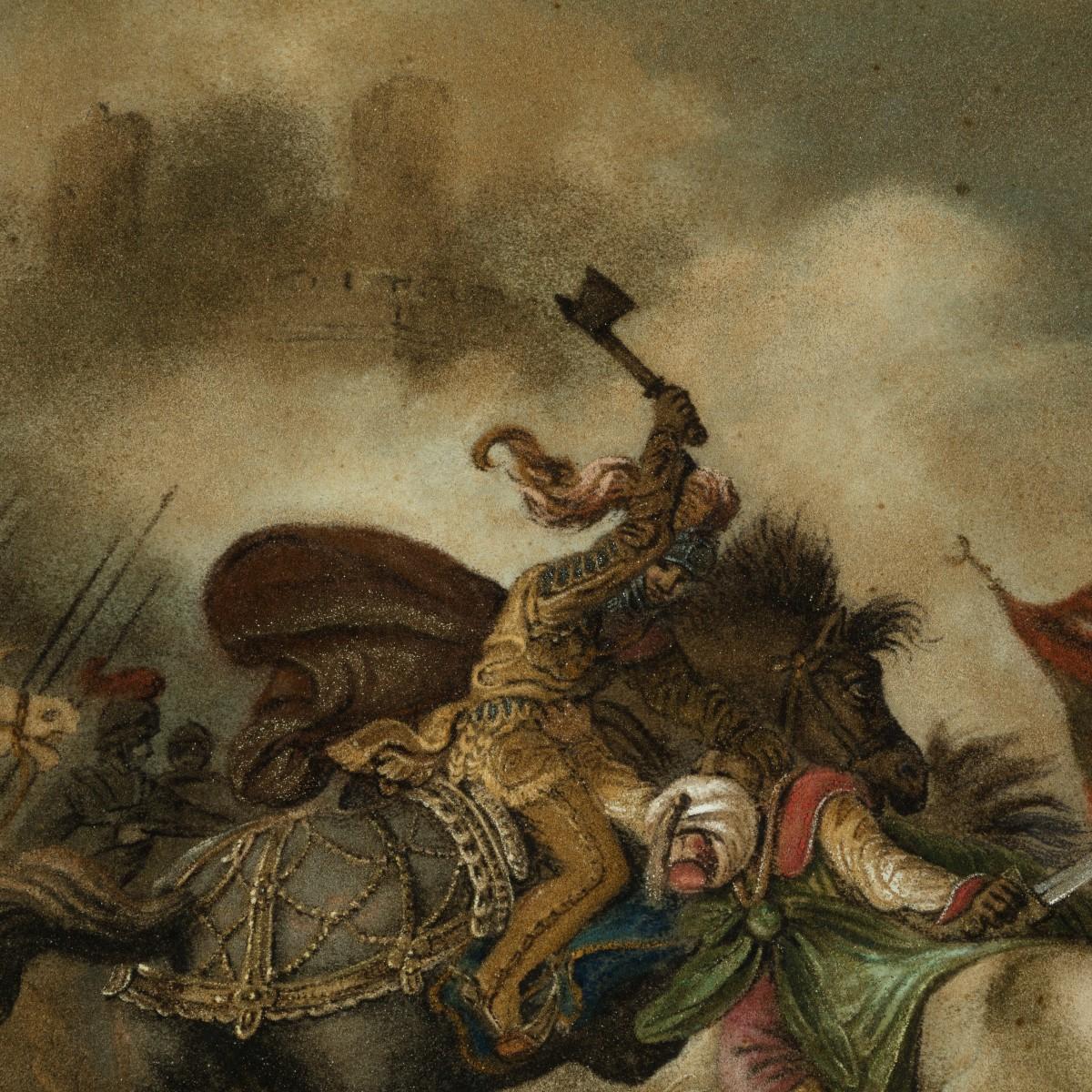
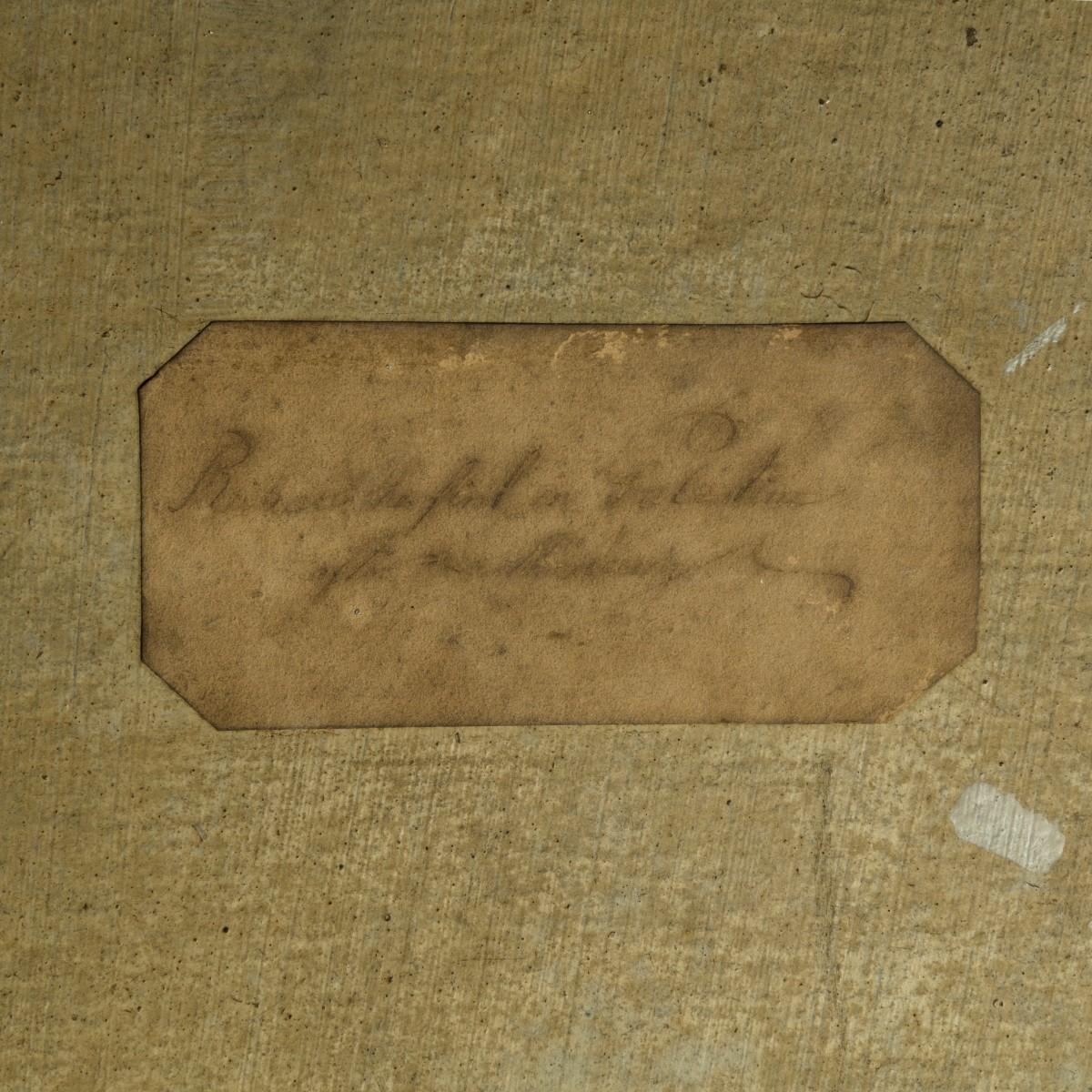
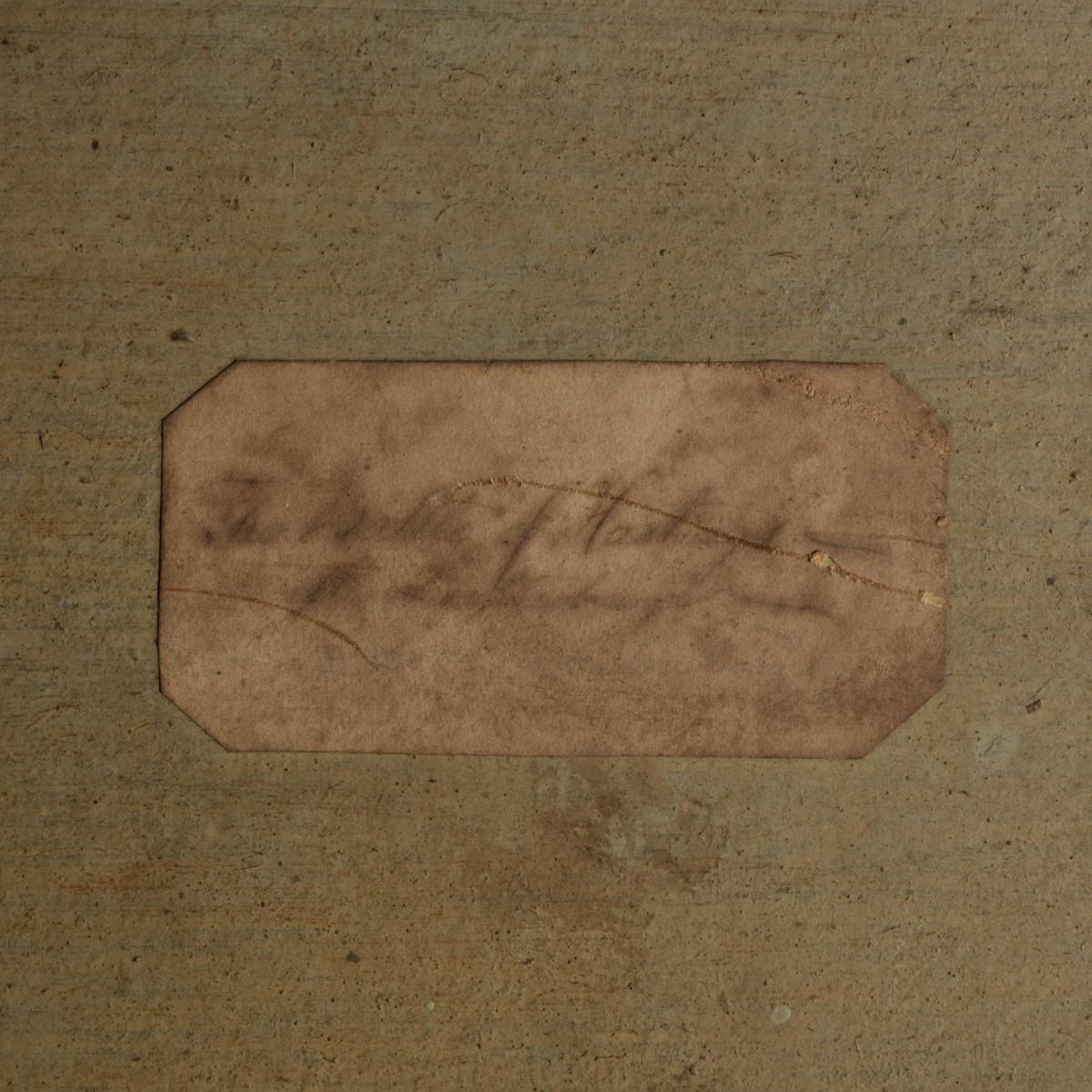
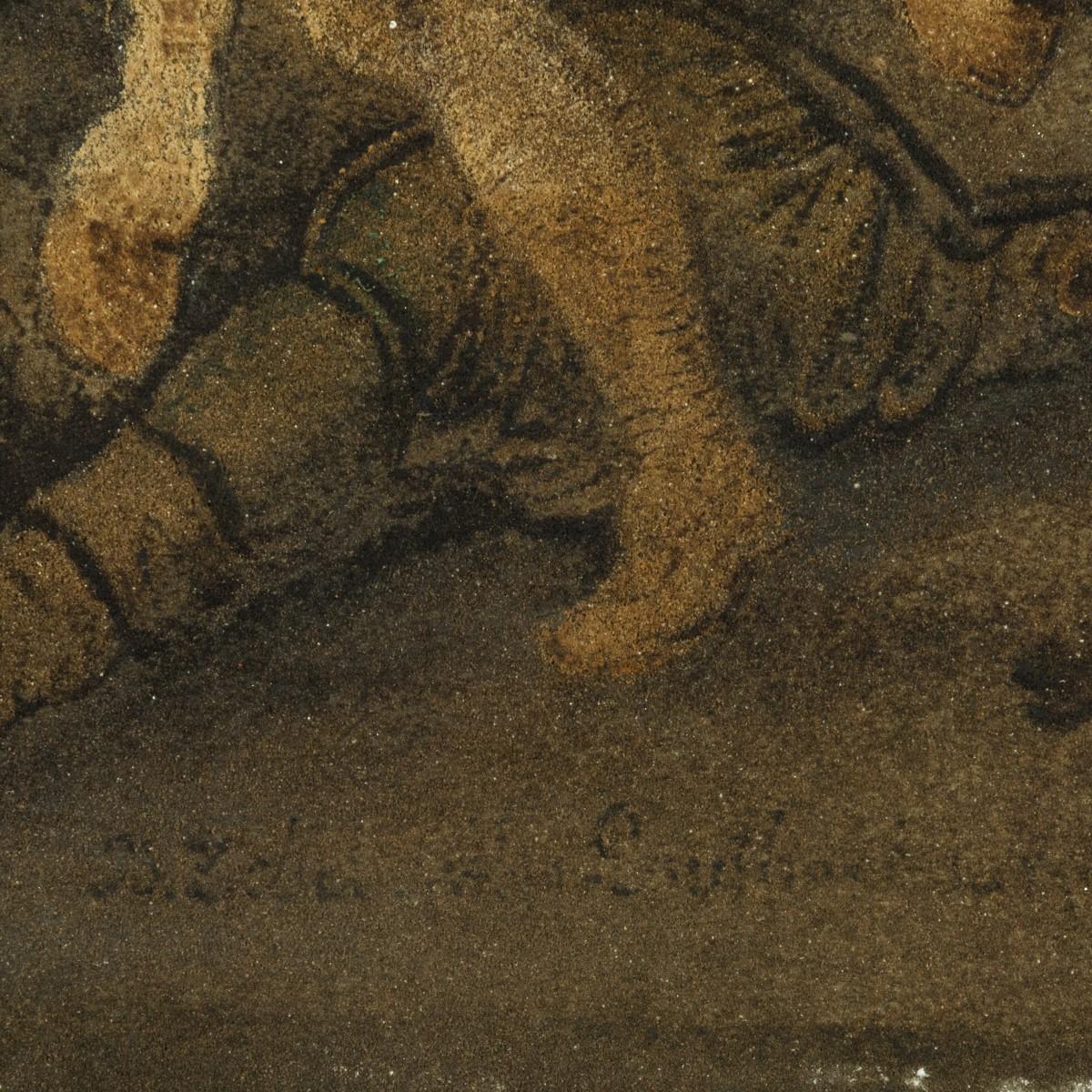
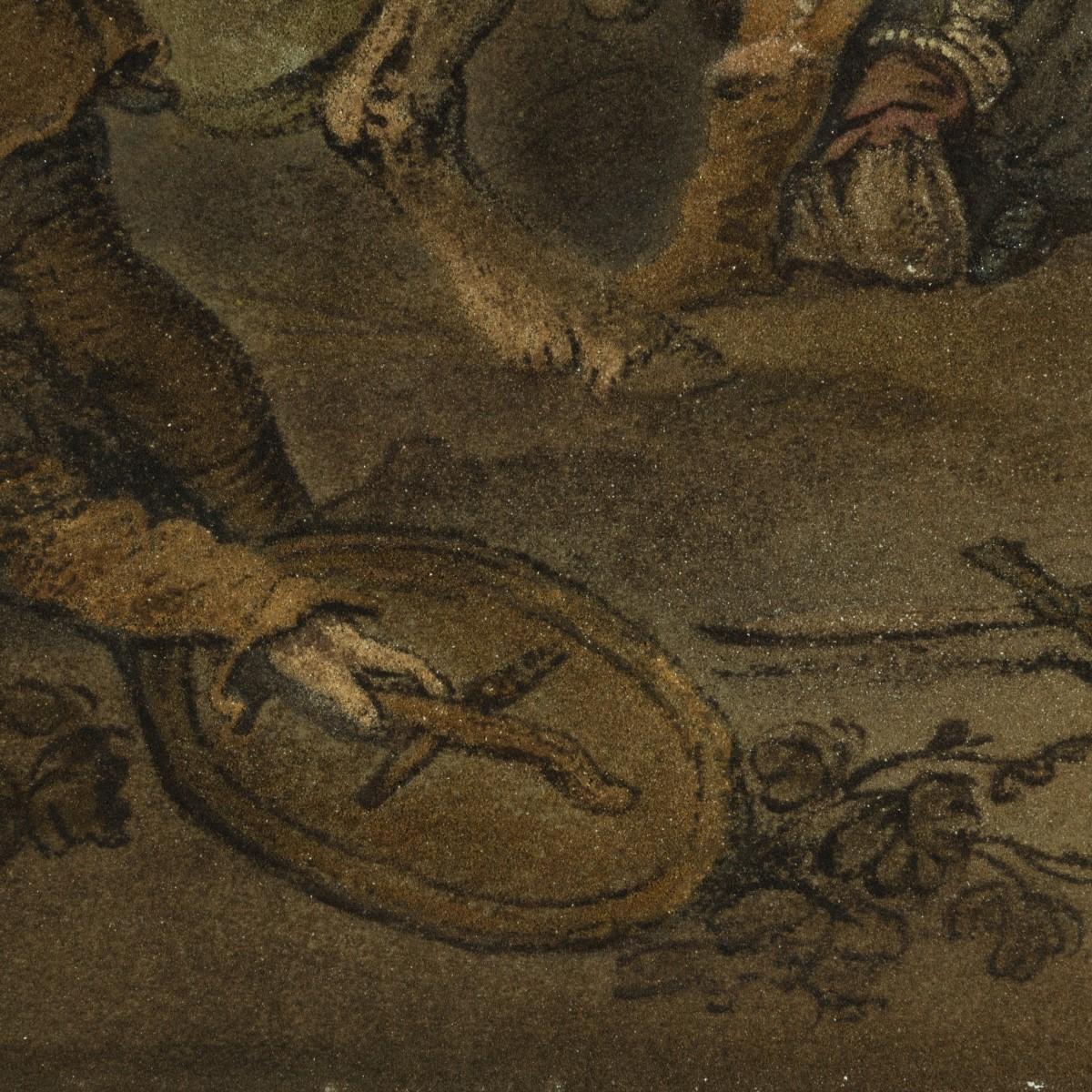
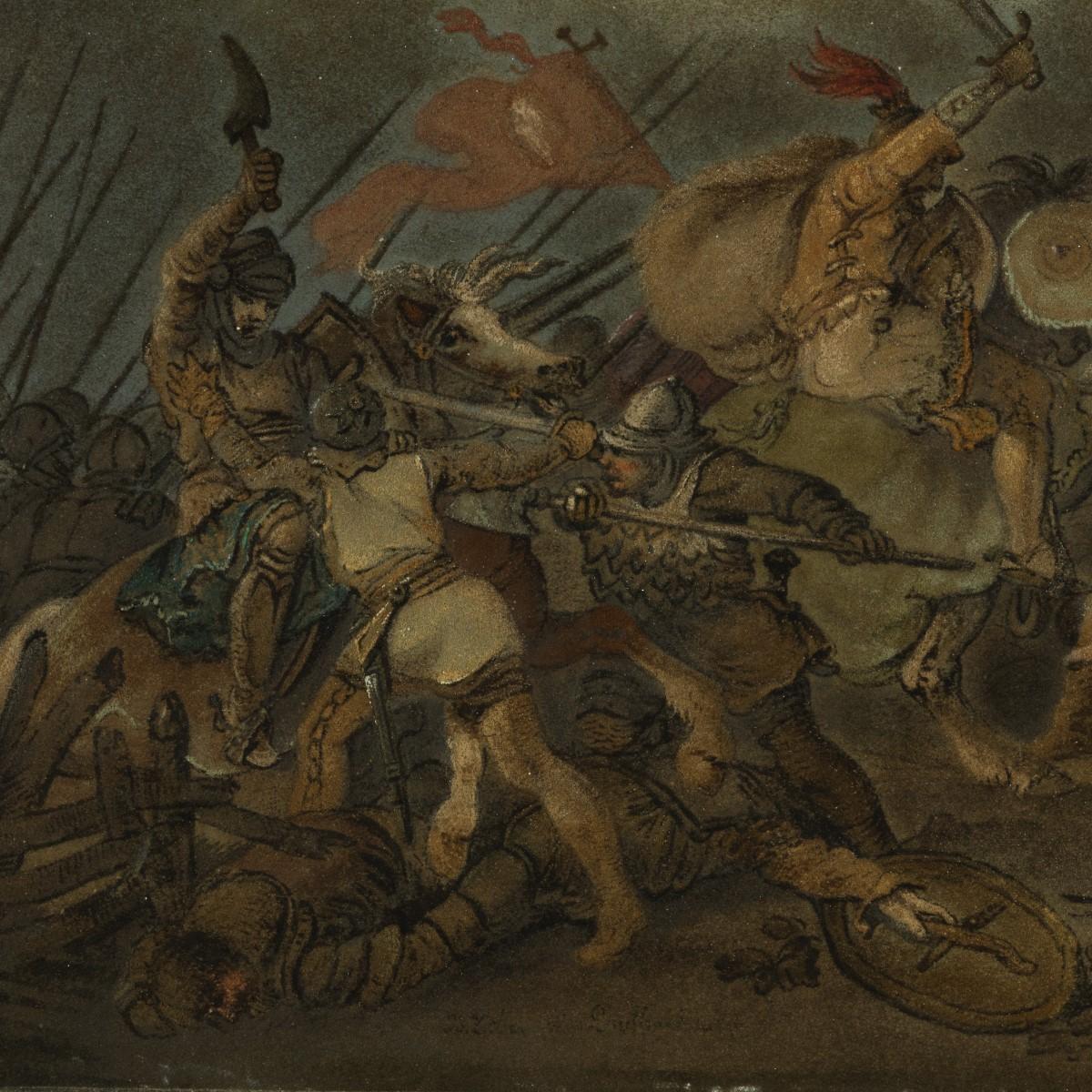
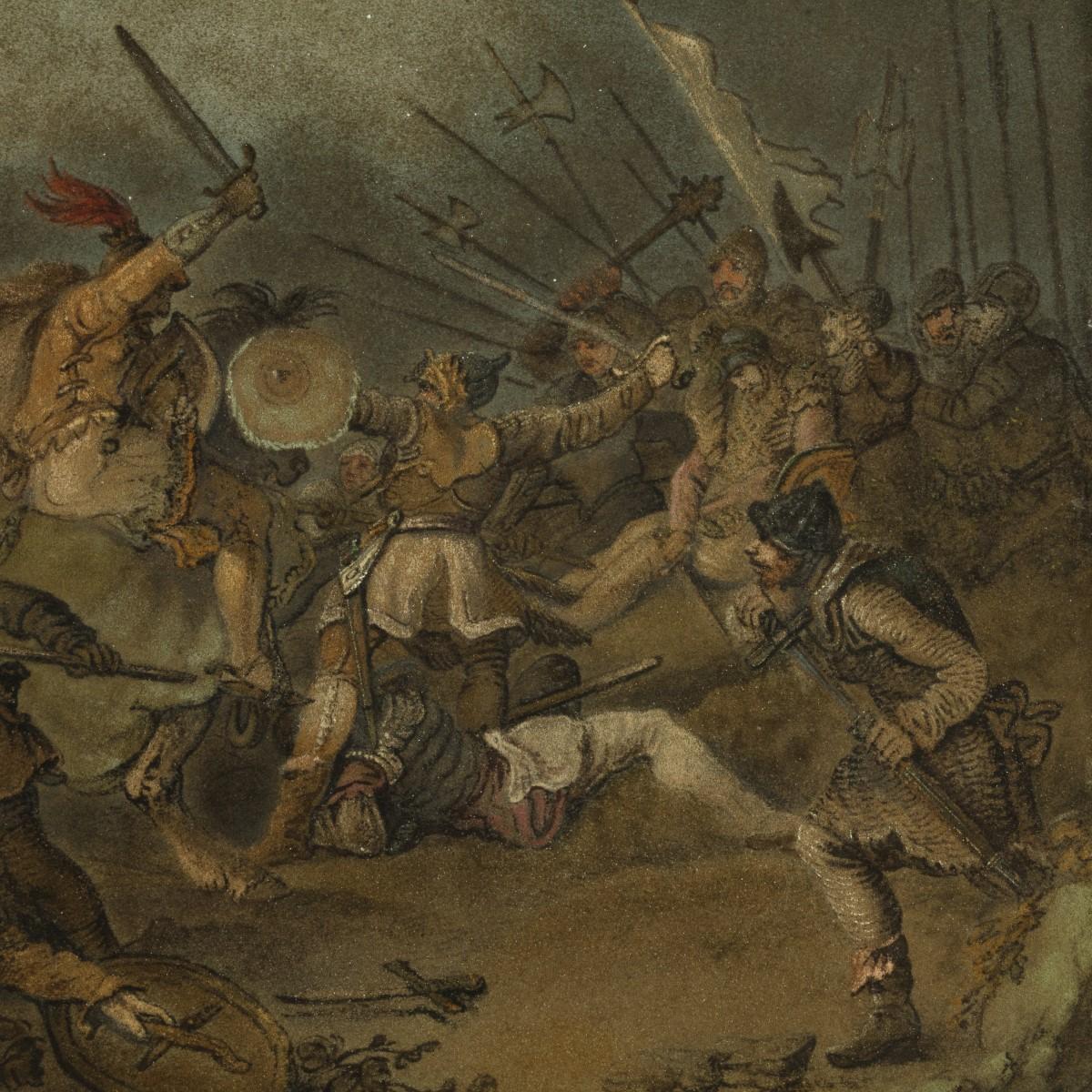
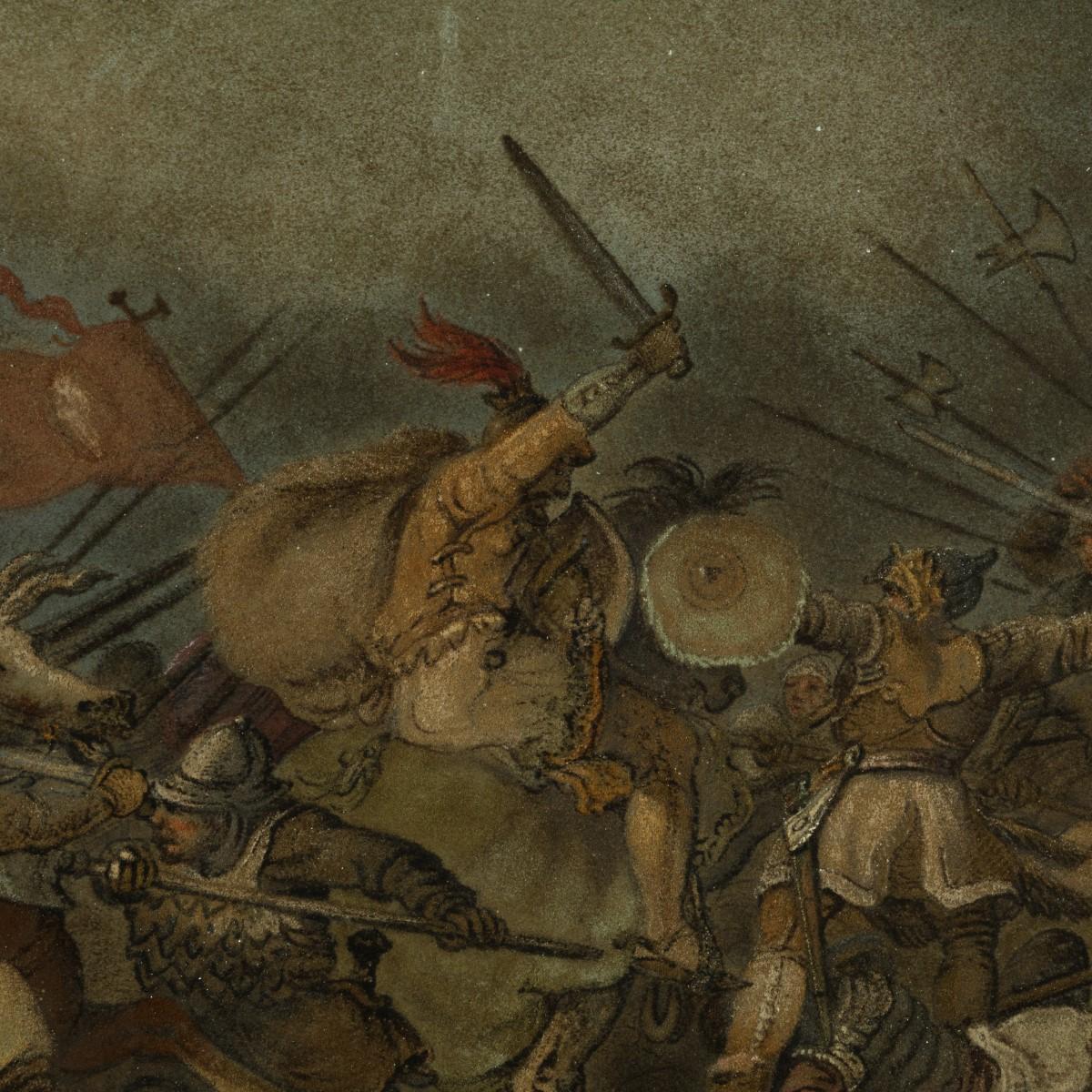
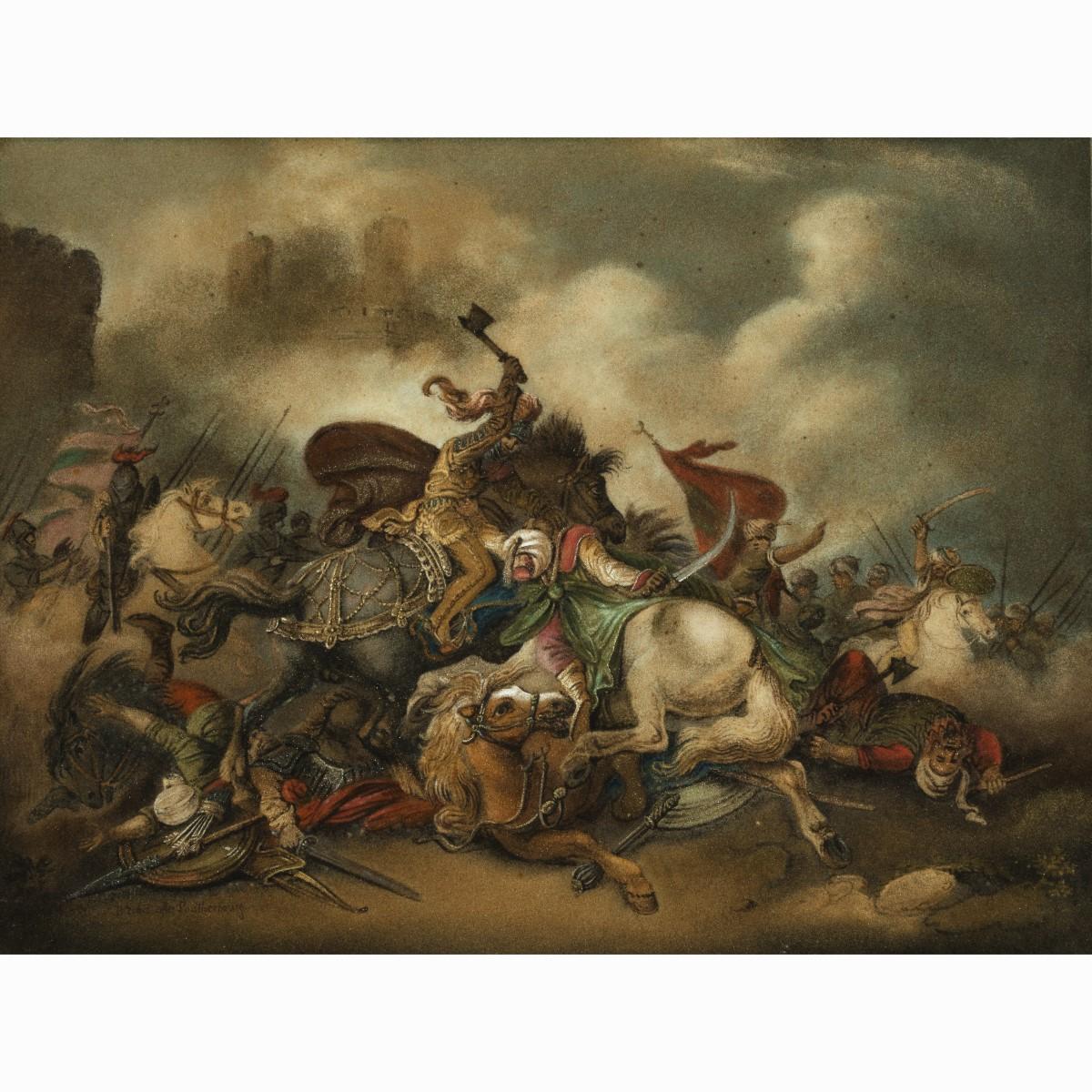
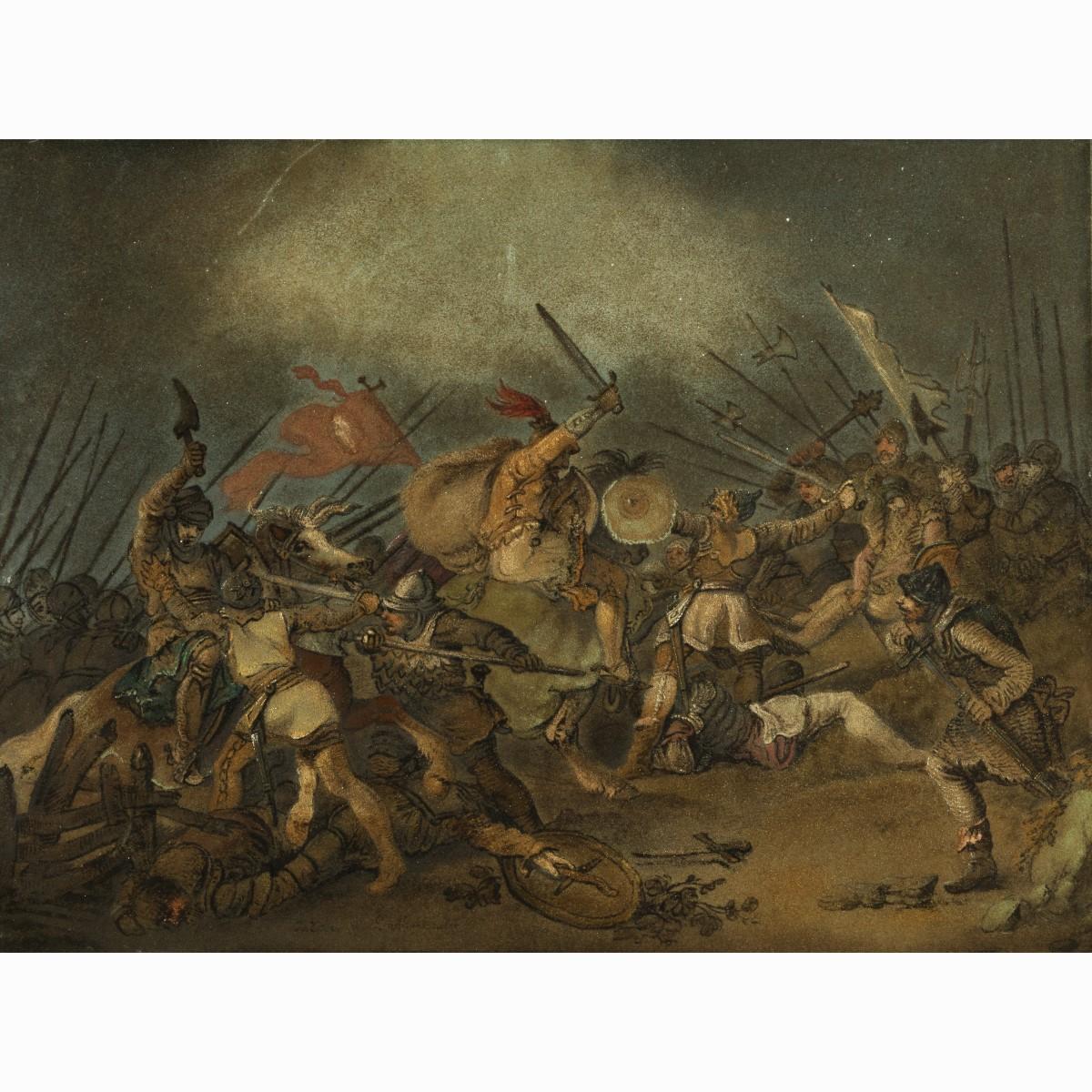
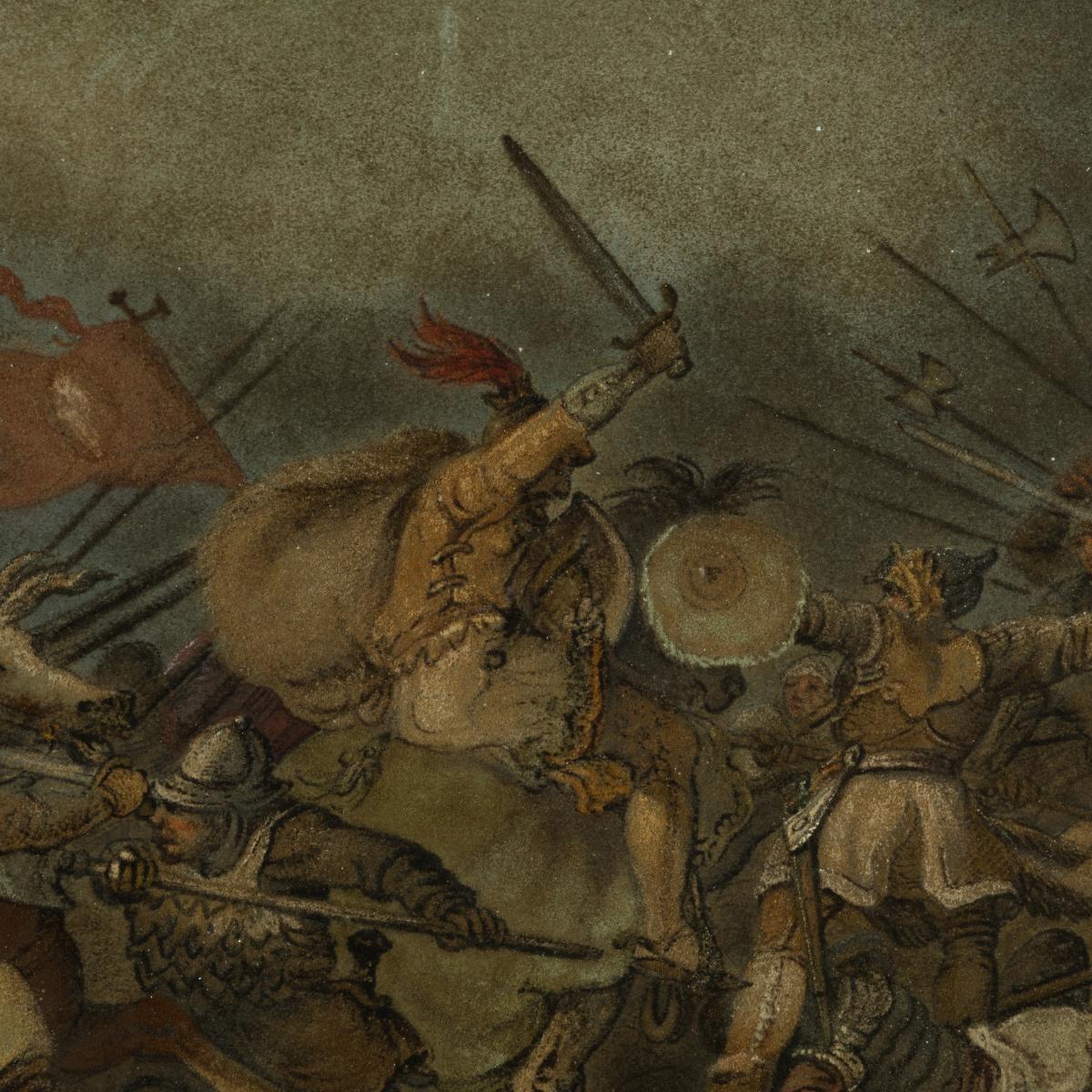
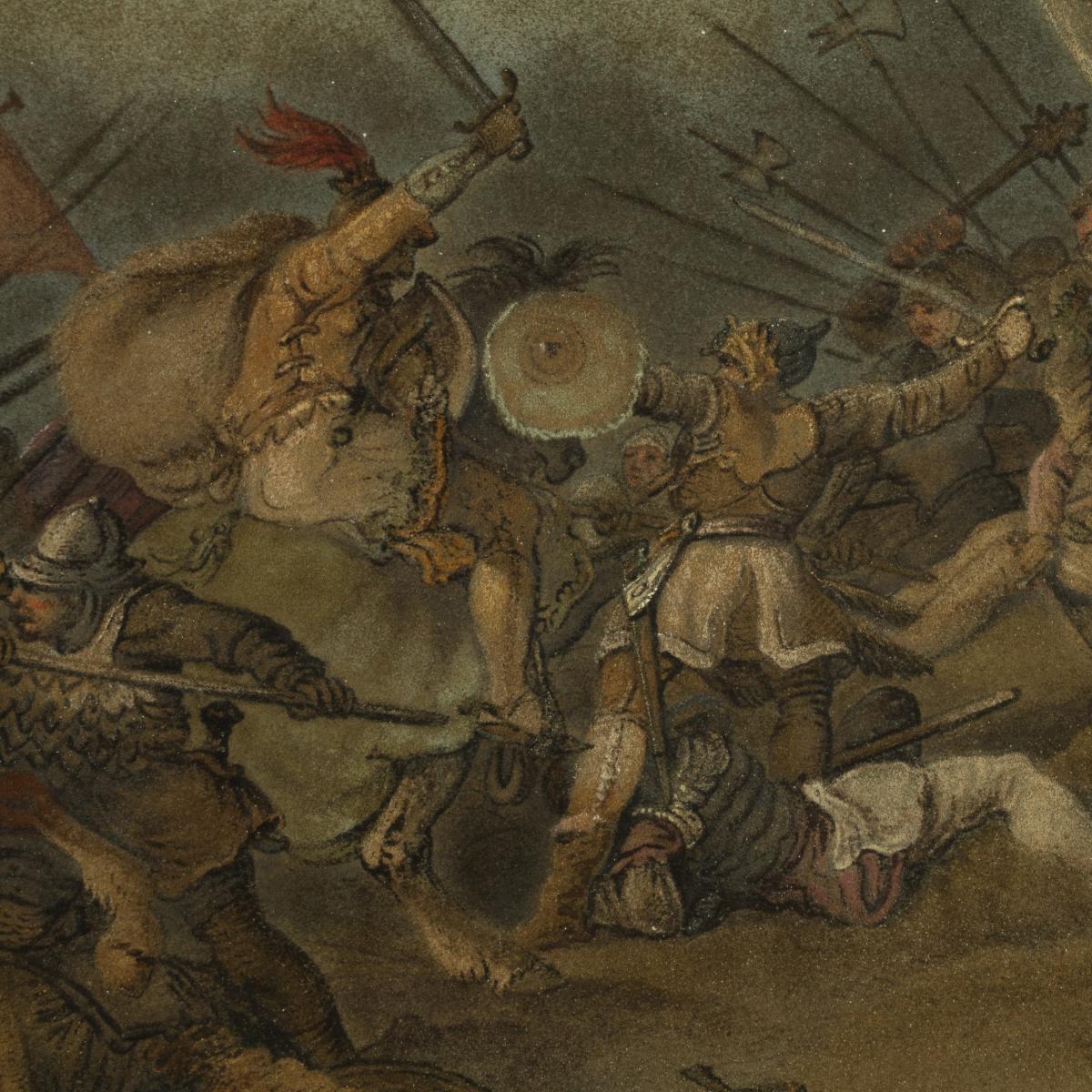
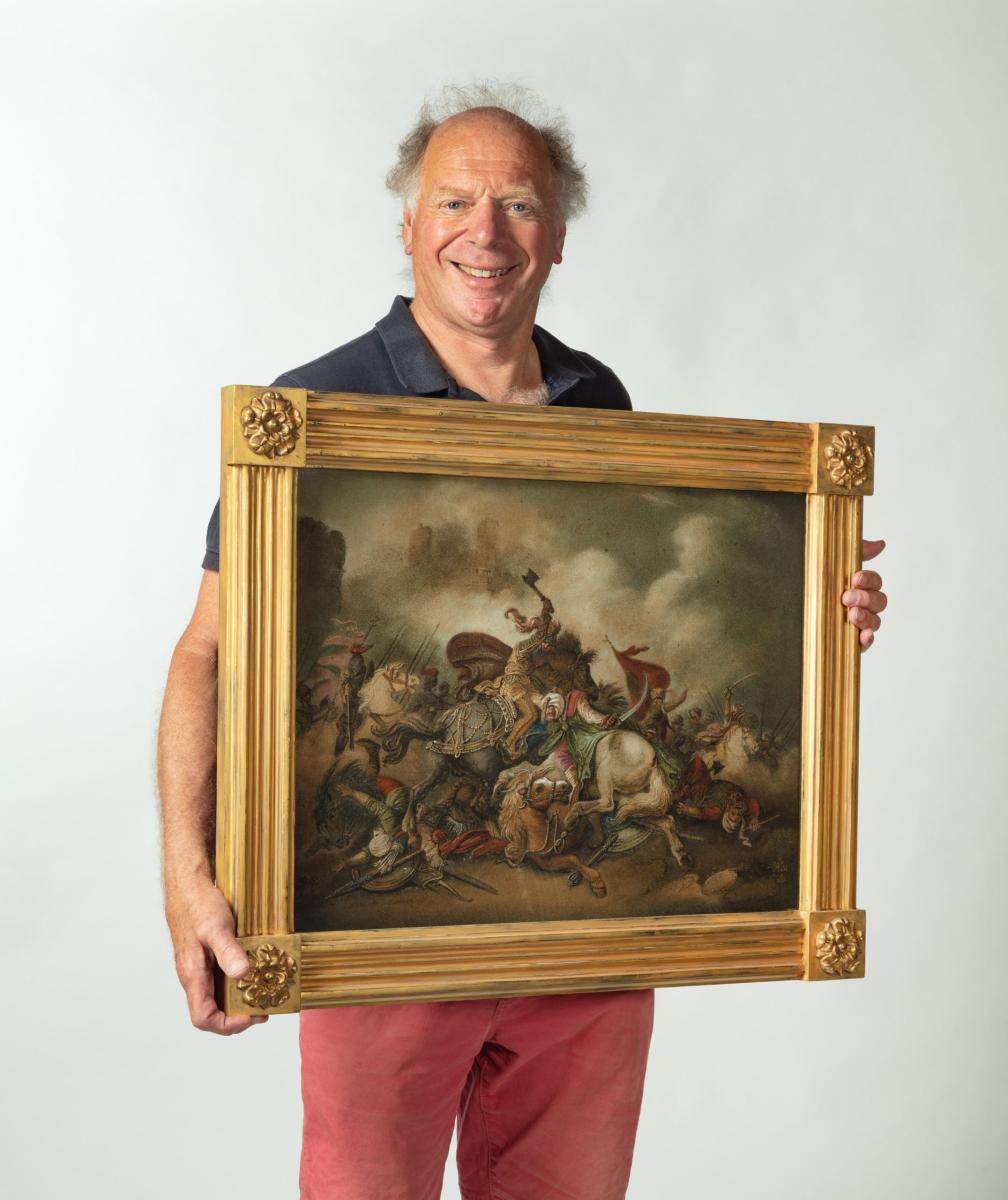
Price
£22500.00This object is eligible for a Certificate of BADA Provenance
The BADA Standard
- Since 1918, BADA has been the leading association for the antiques and fine art trade
- Members are elected for their knowledge, integrity and quality of stock
- Our clients are protected by BADA’s code of conduct
- Our dealers’ membership is reviewed and renewed annually
- Bada.org is a non-profit site: clients deal directly with members and they pay no hidden fees
A pair of sand pictures by Benjamin Zobel after paintings by de Loutherbourg.
These extraordinary ‘paintings’ were created using coloured grains of sand rather than paints. Each is after an original painting by Philip James de Loutherbourg. The first scene shows the Battle of Hastings with a central mounted figure, presumably William the Conqueror, with a red plume in his helmet, raising his sword against a fighter on foot. A printed version of this image, shown above, was made by William Bromley. (See the British Museum registration number 1858,1009.115 for a fine impression.) The second scene, composed with a similar central mounted knight with a raised axe (sword in the original) represents Richard the Lionheart in combat against Saladin at the Battle of Acre. In this case the print was made by Anker Smith (ibid. number 1858,1009.117). In the original giltwood frames. English, circa 1800.
Benjamin Zobel (1762-1830) began his career in Bavaria (Swabia) in the family confectionery business. This apprenticeship became crucial to his career as a sand painter. When he turned eighteen he moved to Amsterdam where he studied miniature painting before moving to London, where he was employed by Ecchard Brothers of Chelsea for whom he designed patterned wallpapers, linens and silks. Three years later he was employed by the Prince Regent’s chef Louis Weltje, and became a `Table Decker’ at Windsor Castle. The custom of `table decking’ had been introduced into England by George III, where the tablecloth at dinner was elaborately decorated with designs of coloured sands, marble dust, powdered glass or breadcrumbs. Zobel became a skilled confectioner and was entrusted with the pictures made in coloured sugars that decorated the huge tarts served at banquets. The method he employed for making sugar patterns was identical to that which he used to make his sand pictures; the sugar, or sand, was shaken through a cut and pleated playing card. Having converted the ephemeral process of sugar pattern to a permanent form of picture making, and believing that there was a future in it, he continued to make his sand pictures in his spare time. The ancient Japanese skill of bonkei or `tray picture’ was known, but Zobel has the reputation of being the inventor of the sand painting technique, and he was certainly the first to introduce the art to England. The subject matter of Zobel’s sand-pictures ranges from battles and biblical scenes to landscapes and flowers, although animals, particularly horses, sheep and pigs held a particular fascination for him. His compositions were often taken from the paintings of his dear friend, George Morland. Zobel constructed his images with painstaking precision and was careful to describe every detail and texture, from the soft fur of a tiger to the rough, dusty ground of the battlefield. His works are extremely rare, not least due to the fragile nature of their construction.
Philip de Loutherbourg was born into a family of painters in France and won great acclaim in England as a history painter in particular. He was elected a Fellow of the Royal Academy in 1801 and in 1807 was titled “Historical Painter to the Duke of Gloucester”.
Dimensions
Height: 20 inches (51cm) Width: 26½ inches (67cm)The BADA Standard
- Since 1918, BADA has been the leading association for the antiques and fine art trade
- Members are elected for their knowledge, integrity and quality of stock
- Our clients are protected by BADA’s code of conduct
- Our dealers’ membership is reviewed and renewed annually
- Bada.org is a non-profit site: clients deal directly with members and they pay no hidden fees


